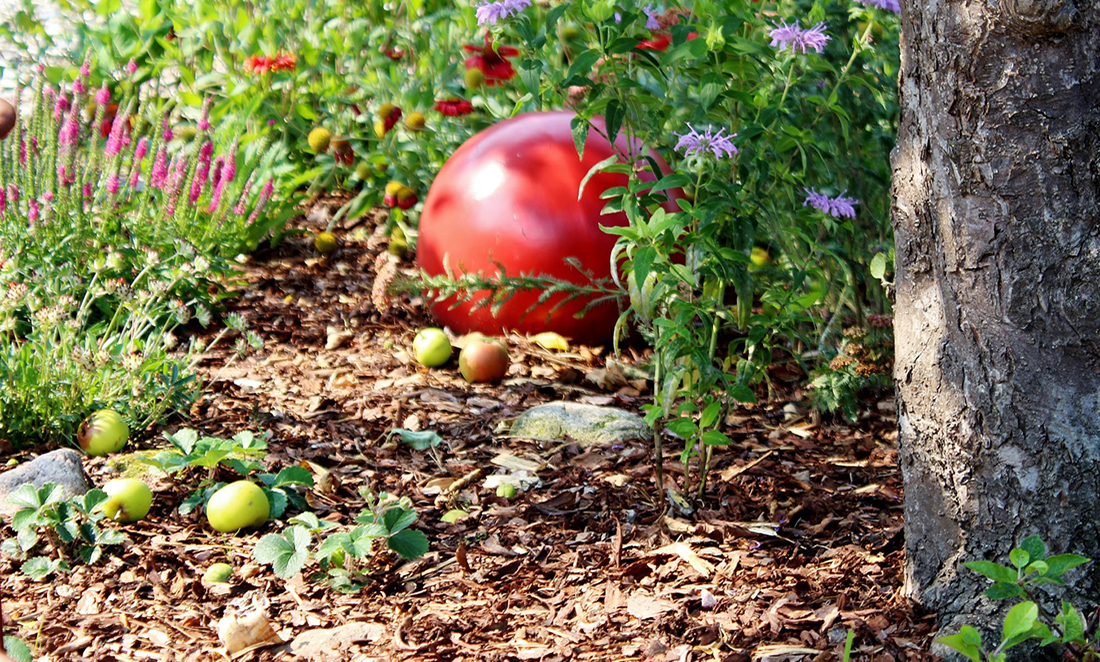The Mediterranean fruit fly or ‘Medfly’ has long been a common pest to WA garden and commercial growers alike, particularly attacking soft-skinned stone fruit like peaches, nectarines and plums.
They inject eggs into fruit that grow into crawly white grubs, spoiling our lovely fruit.
But now, a new fruit fly has been detected, and the fight is on to stop its spread.
Qfly detected in Fremantle
Freo residents have been urged to help stop the spread of the Queensland fruit fly or ‘Qfly’ detected in the area.

WA is currently free from this pest, but if it starts to spread, it could be catastrophic for WA agriculture.
Plant Biosecurity expert Dr Darryl Hardie from WA’s Department of Primary Industries and Regional Development (DPIRD) says Qfly is a significant production pest.
“It attacks a wider range of fruit and vegetables than Medfly,” he says.
“Commercial and native trees, vine fruits, fruit and fruiting vegetables such as eggplant, tomato, capsicum and chilli can all be affected.”
Insect intruder sounds the alarm
Currently, over 1900 traps are located in gardens across the Perth metro area and monitored regularly by DPIRD staff.
“These form part of WA’s fruit fly trapping system, which helps provide an early-warning system for new pests,” Darryl says.

And that system just spotted one on the radar.
“A female fly was found on 24 January 2018 in a department surveillance trap in a lemon tree just east of the Fremantle CBD,” Darryl says.
Luckily, it was found in a residential area, and there have been no detections in commercial fruit or vegetable production areas.
Darryl says additional traps have also been placed in the Fremantle area and are checked weekly, along with regular inspections of potential host plants.
Don’t uproot your fruit
To help prevent any further spread, a Quarantine Area Notice is now in effect.
This covers all of Fremantle and parts of the suburbs of East Fremantle, North Fremantle and White Gum Valley.
Darryl says they are appealing to residents to do the right thing.
“Residents within this area are asked to not move homegrown fruit and vegetables such as tomatoes, chillies or capsicums out of the area.”
Cooked or preserved items are safe to move.
“We have been in contact with residents whose yards have been inspected for host plants such as fruit trees,” he says.
“This material is being baited with an organic insecticide.”
How can you help?
Residents are urged to check fruit and report it if there is unusual fruit fly activity.
This includes larvae in fruit and vegetables not usually associated with fruit fly.
The adult Qfly are slightly bigger than Medfly and have clear wings compared to the Medfly mottled ones.
“We’re asking them to remove ripening fruit from their trees and pick up any fallen fruit,” Darryl says.

Responsible disposal of fruit is vital to ensure the Qfly does not spread.
It can be disposed of by eating it, cooking it (boil or microwave) or freezing it.
It can also be sealed in a heavy-duty black plastic bag and put in direct sunlight for 3 days.
This should kill any flies or larvae before disposing in regular bins.
Darryl says the quarantine area will remain in place until 18 April 2018, provided no further flies are detected.
“We greatly appreciate the support of residents who have allowed us access to their properties.”
More information
Residents who suspect they have Qfly in their fruit are asked to call the department’s Pest and Disease Information Service on 9368 3080, or they can use the department’s MyPestGuide Reporter app to send in a report.
A map of the quarantine area, full list of host fruit and vegetables and more advice to residents is available on the department website.
If you’re living in Freo, spread the word. Because if everyone does their part, we could save WA from a devastating infestation.









